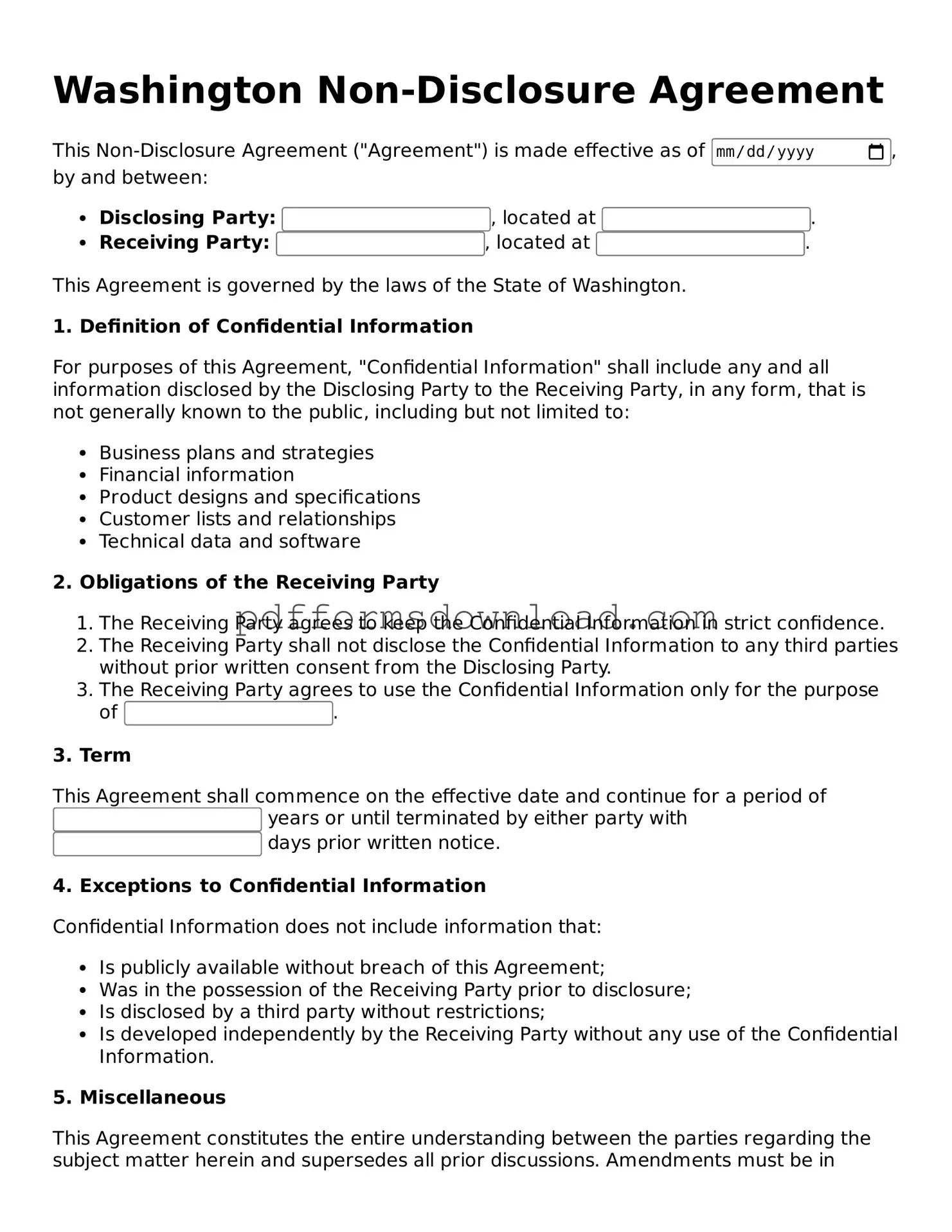What is a Washington Non-disclosure Agreement (NDA)?
A Washington Non-disclosure Agreement is a legal contract designed to protect confidential information shared between parties. It ensures that sensitive data, trade secrets, or proprietary information remains confidential and is not disclosed to unauthorized individuals or entities.
Who should use a Washington NDA?
Any individual or business that plans to share confidential information with another party should consider using a Washington NDA. This includes employers sharing sensitive business strategies, investors discussing financial information, or companies collaborating on joint ventures.
What information can be protected under a Washington NDA?
Generally, any information deemed confidential can be protected under a Washington NDA. This may include business plans, customer lists, marketing strategies, technical data, and financial records. However, information that is publicly available or already known to the receiving party typically cannot be protected.
How long does the confidentiality obligation last?
The duration of the confidentiality obligation can vary. Typically, NDAs specify a time frame during which the receiving party must keep the information confidential. This period can range from a few years to indefinitely, depending on the nature of the information and the agreement between the parties.
What happens if someone breaches the NDA?
If a party breaches the NDA, the injured party may seek legal remedies. This could include monetary damages, injunctive relief to prevent further disclosures, or other remedies specified in the agreement. It is crucial for all parties to understand the consequences of a breach before signing.
Can a Washington NDA be modified?
Yes, a Washington NDA can be modified if both parties agree to the changes. Any amendments should be documented in writing and signed by both parties to ensure clarity and enforceability. It’s important to keep the NDA up to date as circumstances change.
Is it necessary to have a lawyer review the NDA?
While it is not legally required to have a lawyer review the NDA, it is highly recommended. A legal professional can help ensure that the agreement is enforceable, clearly written, and tailored to your specific needs. This can prevent potential disputes and misunderstandings in the future.
